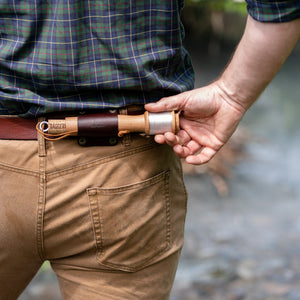Five Great Books to Get Started with Foraging
Hunting is a very advanced skill and fishing can take up a lot of precious energy despite its accessibility. When you’re out in the wilderness, it’s better to try and utilize the resources around you. In an emergency situation, edible wild plants are more likely to temporarily sustain you. Plus, unlike some advanced survival skills, foraging is much easier to practice at home. To help you get started, we’ve provided some basic foraging books with skills you can use on and off the trail.
-
Backyard Foraging by Ellen Zachos
This book is perfect for beginners interested in learning about foods that grow on everyday plants. It’s not as in-depth as some other guides, which may seem counterintuitive. However, when you’re just starting out, simplicity can make the learning curve feel less overwhelming.
This book is dedicated to practice, which is essential for wilderness survival. Instead of bombarding you with every edible plant in the world, it breaks the information down into basic details about plants that grow in your own backyard. The book features 70 edible flowers, weeds, plants and mushrooms that grow in suburban and urban areas.
-
The Joy of Foraging by Gary Lincoff
Another great beginner’s guide, The Joy of Foraging is a more in depth look at edible wild plants. Designed to help you discover edible wild plants all around you, this book includes vivid pictures with detailed descriptions of each subject. It gently introducesbeginner foragers to common and unusual plants without making readers overwhelmed.
The Joy of Foraging includes highlights of other foragers and how they’ve incorporated their skills to their everyday lives. The book includes helpful tips to guide beginners to native plants and their specific locations. These are very detailed, to the point that you’ll be able to discern between the correct plant and a potentially toxic doppelganger.
-
The Skillful Forager by Leda Meredith
If you consider yourself an intermediate or advanced forager, this book is for you! However, beginners can still get a lot of important information out of this detailed foraging guide. This knowledgeable book specifically discusses ethical foraging, a concept that’s essential to environmental conservation.
The Skillful Forager is less focused on identification. Instead, it teaches readers how to harvest wild edible plants and ways to preserve your foraged foods. Featuring descriptive information about forty North American plants, The Skillful Forager educates readers about sustainable harvesting practices.
-
Forage, Harvest, Feast: A Wild-Inspired Cuisine by Marie Viljoen
Marie Viljoen’s beautiful and detailed book is perfect for people who want to take their foraging and harvesting skills to the next level. Forage, Harvest, Feast features over 500 recipes using only foraged ingredients. Examples include foods made out of elderflower, dandelion, nettles, and garlic mustard.
Forage, Harvest, Feast offers recipes that cover all three meals along with desserts, drinks, and preserves. With this book, one’s love of cooking and foraging can collide in the comforts of your own home or when you need it to survive in the wilderness. Paired with visually stunning pictures, this book provides tips on how to cultivate certain edible plants at home.
-
Mushrooming Without Fear: The Beginner's Guide to Collecting Safe and Delicious Mushrooms by Alexander Schwab
Many beginner foragers are most hesitant to search for mushrooms due to their association with advanced harvesting techniques. Many mushrooms are toxic, making it difficult for beginners to feel confident ingesting them without the fear of being poisoned. For these reasons, Mushrooms Without Fear offers a more refined approach to foraging guidance.
Instead of detailing a wide range of mushrooms, this book focuses on a select few that are accessible to anyone. To ease the worries of beginner mushroom foragers, the book provides an identification checklist for every mushroom featured in the guide. Paired with vivid colored images, Mushrooms Without Fear is great for people interested in mushroom foraging without the increased risks that come with.
Start Foraging!
Whether you’re just starting out or a well established, advanced forager, Daggerfish Gear is prepared to help you gather your wild foods. Varying in colors and sizes, we’re happy to offer you our high quality foraging storage pouches.
The streamline forager’s pouch is crafted from the finest leather material and paired with a collapsible belt. Meanwhile, our field pouches are water repellant and range in sizes from a quart to a gallon. Before embarking on your next adventure, invest in Daggerfish Gear’s high-quality foraging items!



















